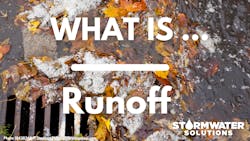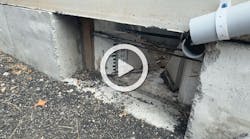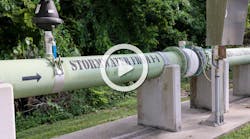In short, stormwater runoff is made of the rain and snowmelt that flows off land or impervious surfaces, such as rooftops, driveways, lawns, streets, etc.
The U.S. Environmental Protection Agency’s (EPA) National Pollutant Discharge Elimination System (NPDES) Permitting Program regulates runoff from municipal separate storm sewer systems (MS4s); and industrial and construction activities.
According to the EPA, some operators may be required to “obtain an NPDES permit before they can discharge stormwater. This permitting mechanism is designed to prevent stormwater runoff from washing harmful pollutants into local surface waters.
But before obtaining a permit, it’s important to understand the basics of runoff.
What are the impacts of runoff?
According to the EPA, “runoff can pick up and deposit harmful pollutants like trash, chemicals, and dirt/sediment into streams, lakes, and groundwater. Construction sites, lawns, improperly stored hazardous wastes, and illegal dumping are all potential sources of stormwater pollutants.”
Additionally, runoff can pick up pollutants from paved surfaces, such as sediment and bacteria that come from sources like pet waste, lawn fertilizer and more. Unmanaged runoff can cause numerous problems, including flooding, pollution and streambank erosion.
According to the Itasca Soil and Water Conservation District, runoff can reach streams quickly, not only causing them to rise quickly but also causing stream bank erosion.
“When stormwater flows into streams at unnaturally high volumes and speeds, the power of these flows can cause severe stream bank erosion,” the district’s website said. “Eroding banks can eat away at streamside property, create dangerous situations, and damage natural habitat for fish and other aquatic life. This erosion is another source of sediment pollution in streams.”
Runoff control examples
To maintain the NPDES permit, and control runoff in general, communities and municipalities can implement various practices to manage it. According to the EPA, some runoff control measures include:
- Public education and outreach – Municipalities can communicate several mitigation tactics to residents, such as encouraging rain gardens and barrels, planting native trees and following lawn care practices.
- Erosion and sediment control measures – This is especially critical on construction sites, where sediment, chemicals and more can be washed into waterways.
- Land use controls and or/incentives – Examples of this might be zoning ordinances, overlay districts and restricting activities within defined areas.
- Low impact development and green infrastructure – Efforts, such as rain gardens, vegetated rooftops and constructed wetlands, can often slow, detain or filter contaminants in stormwater.
Resources
For more information on runoff, visit these links.
About the Author
Katie Johns
Katie Johns, editor-in-chief of Stormwater Solutions, graduated from the University of Missouri in 2016 with a Bachelor of Journalism and a Bachelor of Arts in Spanish. Johns joined the Stormwater Solutions team in September 2019. Johns also helps plan the annual StormCon conference and co-hosts the Talking Under Water podcast. Prior to entering the B2B industry, she worked as a newspaper reporter and editor in Sarasota, Florida, and a magazine assistant editor in the Chicago suburbs. She can be reached at [email protected].



